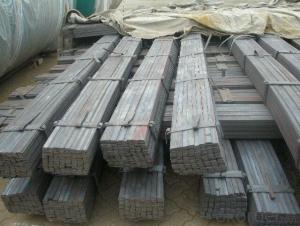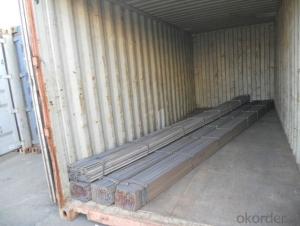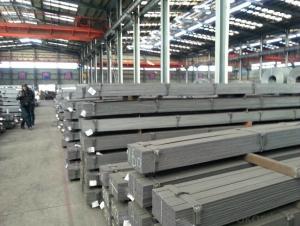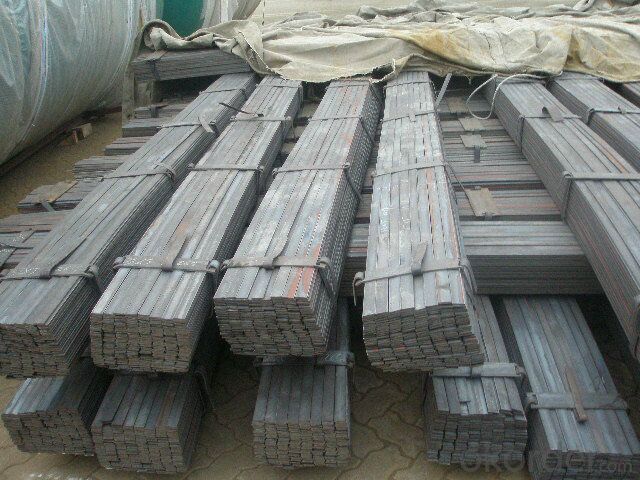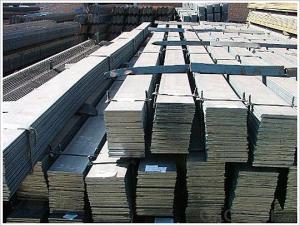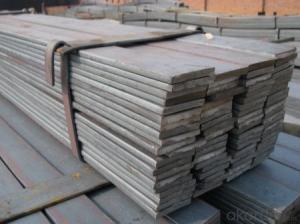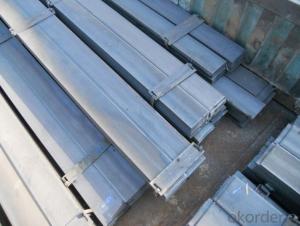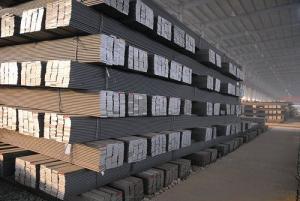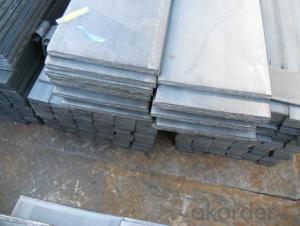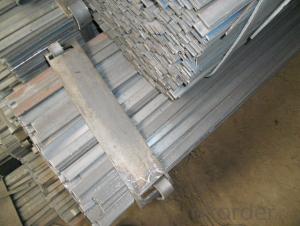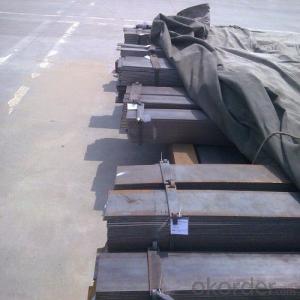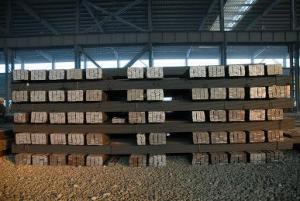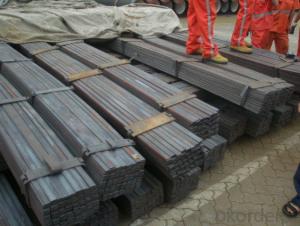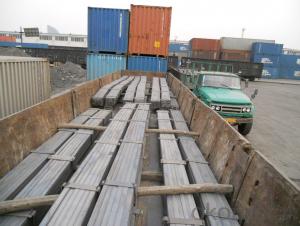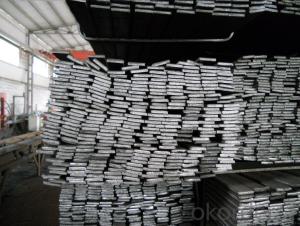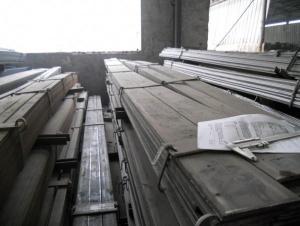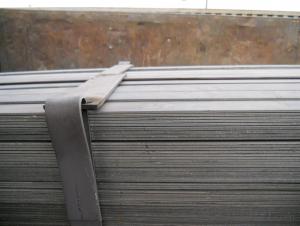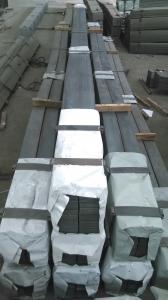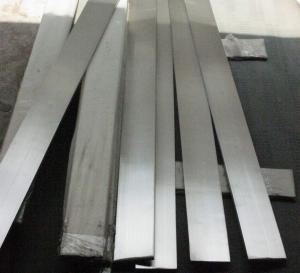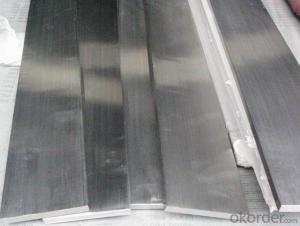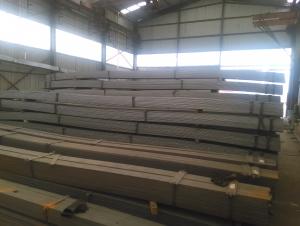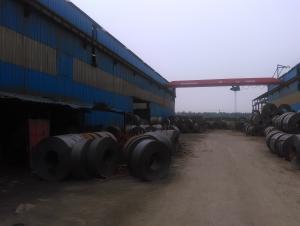Spring Steel Hot Rolled Flat Bar with high quality
- Loading Port:
- Tianjin
- Payment Terms:
- TT or LC
- Min Order Qty:
- 25 m.t
- Supply Capability:
- 12000 m.t/month
OKorder Service Pledge
OKorder Financial Service
You Might Also Like
Specification
Product Description:
OKorder is offering Spring Steel Hot Rolled Flat Bar with high quality at great prices with worldwide shipping. Our supplier is a world-class manufacturer of steel, with our products utilized the world over. OKorder annually supplies products to European, North American and Asian markets. We provide quotations within 24 hours of receiving an inquiry and guarantee competitive prices.
Product Applications:
Spring Steel Hot Rolled Flat Bar with high quality are ideal for structural applications and are widely used in the construction of buildings and bridges, and the manufacturing, petrochemical, and transportation industries.
Product Advantages:
OKorder's Spring Steel Hot Rolled Flat Bar with high quality are durable, strong, and resist corrosion.
Main Product Features:
· Premium quality
· Prompt delivery & seaworthy packing (30 days after receiving deposit)
· Corrosion resistance
· Can be recycled and reused
· Mill test certification
· Professional Service
· Competitive pricing
Product Description:
Specification of Spring Steel Hot Rolled Flat Bar with high quality
Commodity: Mild Steel Flat Bar
Standard: GB;JIS
Material: Q195-235;SS400
Origin place: China
Thickness: 3mm-30mm
Width:20mm-200mm
Length: Max 12m
Certification: SGS/BV
Usage/Applications of Steel Flat Bar
Widely used for construction, Machinery manufacturing, Iron tower steel structure, Shipbuilding; Steel grating, Staircase, Bridge, Viaduct, Railway spare parts, Boilers making etc.
Packaging & Delivery of Mild Steel Flat Bar
Packaging Details: The Mild Steel Flat Bars are packed in bundles and loaded in 20 feet/40 feet container, or shipped by bulk cargo ,also we can do as customer's requirements.
Delivery Details:30~45 days upon the receipt of buyer payment by T.T. or L/C.
Production Flow of Steel Flat Bar
The Mild steel flat bar is made through three processes:
1.Feeding the material: Feeding the row material (the steel plate) to Slitting Line.
2.Slitting:The steel plate would be slitted into expected width by lengthways cutter.
3. Leveled and cutting: The plat bar would be ground into level by the grinder and then cut into required length
FAQ:
Q1: Why buy Materials & Equipment from OKorder.com?
A1: All products offered byOKorder.com are carefully selected from China's most reliable manufacturing enterprises. Through its ISO certifications, OKorder.com adheres to the highest standards and a commitment to supply chain safety and customer satisfaction.
Q2: How do we guarantee the quality of our products?
A2: We have established an advanced quality management system which conducts strict quality tests at every step, from raw materials to the final product. At the same time, we provide extensive follow-up service assurances as required.
Q3: The products are invoicing on theoritical weight or on actual weight?
A3: We can do it in both manners, according to the customers' request.
Image:
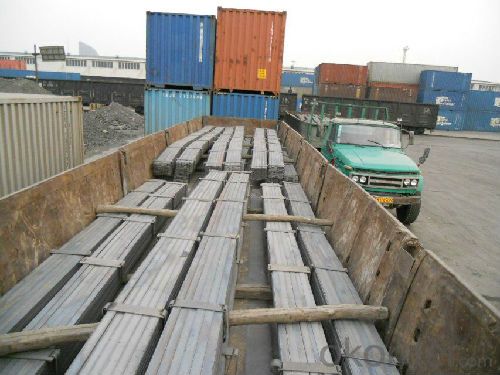
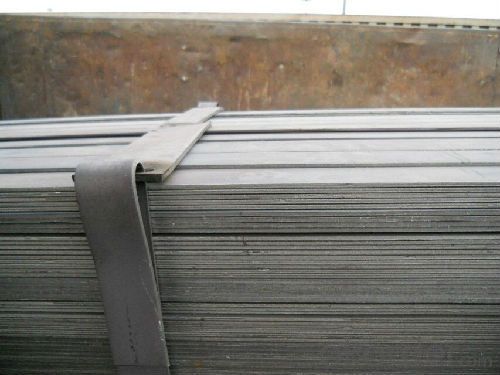
- Q: What are the different types of surface coatings available for steel flat bars?
- Some of the different types of surface coatings available for steel flat bars include galvanized coatings, paint coatings, powder coatings, and epoxy coatings. These coatings provide protection against corrosion, enhance the appearance of the steel, and can also provide additional functional properties such as improved resistance to chemicals or abrasion.
- Q: How do steel flat bars contribute to the overall durability of commercial structures?
- Steel flat bars contribute to the overall durability of commercial structures in several ways. Firstly, steel is known for its high strength and durability, making it an ideal material for construction. Steel flat bars have a high tensile strength, meaning they can withstand heavy loads and resist bending or warping under pressure. This strength allows commercial structures to support the weight of various elements, such as floors, walls, and roofs, ensuring their stability over time. Additionally, steel flat bars are resistant to corrosion, which is crucial in commercial structures where exposure to moisture and harsh weather conditions is common. Unlike other materials like wood or concrete, steel does not rot or deteriorate when exposed to water or moisture. This corrosion resistance helps prevent structural damage, ensuring the longevity and safety of the commercial building. Moreover, steel flat bars are highly versatile and can be customized to fit specific design requirements. They can be easily cut, drilled, and welded, allowing for flexibility in creating complex and intricate structures. This adaptability in design ensures that commercial structures can be constructed efficiently and with precision, resulting in a more durable and reliable building. Another important aspect is the fire resistance of steel flat bars. Steel is inherently non-combustible, meaning it does not contribute to the spread or intensity of fires. This fire-resistant quality makes steel flat bars a preferred material for commercial structures, as it enhances the safety of occupants and minimizes the potential for structural damage in the event of a fire. Lastly, steel flat bars are often used in reinforcement applications. They can be embedded within concrete structures, such as beams or columns, to enhance their load-bearing capacity. This reinforcement adds an extra layer of strength and durability to the commercial building, ensuring its ability to withstand heavy loads and potential impacts. In summary, steel flat bars contribute to the overall durability of commercial structures through their high strength, corrosion resistance, versatility in design, fire resistance, and reinforcement capabilities. Their incorporation in construction ensures the longevity, safety, and stability of commercial buildings, making them an essential component in the construction industry.
- Q: What are the different types of surface defects in brass steel flat bars?
- There are several types of surface defects that can occur in brass steel flat bars, including scratches, pits, dents, and surface roughness.
- Q: How is a steel flat bar manufactured?
- Hot rolling is the method used to manufacture a steel flat bar. This involves heating a large rectangular steel billet until it becomes malleable. The billet is then passed through a series of rolling mills where it is gradually compressed and shaped into a flat bar. To begin the manufacturing process of a steel flat bar, the steel billet must be prepared. Typically made of carbon steel, the billet is cast into a rectangular shape and then reheated in a furnace to a temperature that allows for easy shaping and manipulation. Once the billet has reached the desired temperature, it is fed into a series of rolling mills. These mills consist of rollers that gradually reduce the thickness and shape of the steel billet as it passes through. The billet is subjected to immense pressure from the rollers, causing it to elongate and take on the desired flat shape. As the billet passes through the rolling mills, it is cooled and lubricated to prevent overheating and excessive wear. Cooling methods such as water or air jets are used, while lubricants like oil or emulsions are applied to reduce friction and improve the surface finish. After undergoing several passes through the rolling mills, the steel billet is transformed into a flat bar with the desired dimensions. The bar is then cut to the required length and allowed to cool. Additional processes such as straightening, surface treatment, and quality inspection may be carried out before the bar is ready to be shipped or used in various applications. In summary, the manufacturing process of a steel flat bar involves heating the steel billet, passing it through rolling mills to shape and reduce its thickness, and then cutting and cooling the bar to its final dimensions. This process ensures that the steel flat bar possesses the necessary strength, durability, and surface finish required for its intended application.
- Q: How do steel flat bars perform in high-temperature oxidation conditions?
- Steel flat bars typically perform well in high-temperature oxidation conditions. Steel is known for its high resistance to oxidation, especially in the presence of oxygen. At high temperatures, the surface of the steel flat bar forms a protective oxide layer, primarily composed of iron oxide, which acts as a barrier against further oxidation. This oxide layer helps prevent the steel from corroding and degrading in high-temperature environments. Furthermore, the composition of the steel plays a crucial role in its performance in high-temperature oxidation conditions. Steel grades with higher chromium content, such as stainless steel, exhibit enhanced resistance to oxidation due to the formation of a stable and protective chromium oxide layer on the surface. This layer acts as an additional barrier against oxidation, improving the overall performance of steel flat bars in high-temperature oxidation conditions. However, it is important to note that prolonged exposure to extremely high temperatures or harsh oxidizing environments, such as those found in certain industrial processes, may still lead to some level of oxidation and degradation. Therefore, it is advisable to consider the specific operating conditions and consult with experts or engineers to select the appropriate steel grade or apply additional protective coatings if necessary to ensure optimal performance in high-temperature oxidation conditions.
- Q: Are steel flat bars suitable for architectural cladding?
- Yes, steel flat bars can be suitable for architectural cladding. Steel is a popular material choice for cladding due to its durability, strength, and versatility. Steel flat bars can be used to create sleek and modern designs for architectural cladding applications. They can be easily shaped, cut, and welded to achieve the desired look and can be finished with various surface treatments such as galvanizing, powder coating, or painting to enhance their aesthetic appeal and protect against corrosion. Steel flat bars can be used as vertical or horizontal elements in cladding systems, providing structural support and creating visually appealing facades. Additionally, steel is a sustainable material that can be recycled, making it an environmentally friendly choice for architectural cladding. However, it is important to consider the specific requirements of the project, such as the local climate conditions, maintenance requirements, and the desired design aesthetic, to determine if steel flat bars are the most suitable option for the specific architectural cladding application.
- Q: Can steel flat bars be used in the construction of pipelines?
- Yes, steel flat bars can be used in the construction of pipelines. Steel flat bars are commonly used in various industries, including construction, due to their strength, durability, and versatility. In pipeline construction, steel flat bars are often used as supports, brackets, or reinforcement in the pipeline structure. They can also be used as a base for pipe hangers or to provide additional strength and stability to the overall pipeline system. Additionally, steel flat bars can be welded or bolted together to create custom fittings or connections in the pipeline. Overall, steel flat bars are a reliable and cost-effective choice for use in pipeline construction.
- Q: Can steel flat bars be used for making brackets or supports for power generation equipment?
- Certainly, brackets or supports for power generation equipment can be made using steel flat bars. Steel, a sturdy and long-lasting material, is widely employed in the construction of diverse industrial machinery, including power generation systems. Steel flat bars provide remarkable strength and rigidity, rendering them suitable for supporting heavy loads and enduring the challenging operational conditions often encountered in power generation facilities. Additionally, steel is renowned for its corrosion resistance, a crucial characteristic for equipment exposed to moisture or harsh environments. In summary, steel flat bars are a dependable option for fabricating brackets or supports for power generation equipment due to their strength, durability, and resistance to corrosion.
- Q: How do you check the straightness of a steel flat bar?
- To determine if a steel flat bar is straight, proceed as follows: 1. Visual Examination: Begin by visually inspecting the flat bar for any visible curves or bends. Place it on a level surface and visually identify any deviations from a straight line. Look for warping, twisting, or bowing along its length. 2. Manual Assessment: Run your hand along the bar's length, feeling for irregularities or deviations from a straight line. Pay close attention to uneven areas or noticeable bumps. This step helps detect subtle curves that may not be visible during visual inspection alone. 3. Straight Edge Technique: Position a straight edge, such as a ruler or level, along the length of the steel flat bar. Ensure that the straight edge makes full contact with the bar's surface. Observe if there are any gaps or spaces between the straight edge and the bar. If the straight edge cannot lie flat on the bar without any gaps, it indicates that the bar is not perfectly straight. 4. Measurement Tool: Utilize a precise measuring tool, such as a caliper or feeler gauge, to measure the gap between the straight edge and the steel flat bar at various points along its length. By measuring these gaps, you can determine the extent of any curves or deviations from a straight line. The larger the gap, the more pronounced the bend or curve. 5. Repeat and Average: Repeat the aforementioned steps at multiple locations along the flat bar's length to ensure an accurate assessment. Steel flat bars often have slight variations in straightness, so checking at multiple points provides a more comprehensive evaluation. After measuring at different locations, calculate the average of the results to understand the overall straightness of the flat bar. By following these steps, you can evaluate the straightness of a steel flat bar and determine if it meets your desired criteria.
- Q: Can steel flat bars be used for toolmaking?
- Toolmaking can indeed utilize steel flat bars. Steel, being both versatile and durable, is frequently employed in toolmaking because of its robustness and resistance to deterioration. Steel flat bars can be conveniently molded and machined, enabling the production of diverse tools like punches, chisels, and cutting blades. Furthermore, steel can undergo heat treatment, thereby enhancing its hardness and resilience, thus rendering it ideal for applications necessitating immense strength and precision. All in all, steel flat bars are widely favored in toolmaking owing to their exceptional mechanical attributes and adaptability.
Send your message to us
Spring Steel Hot Rolled Flat Bar with high quality
- Loading Port:
- Tianjin
- Payment Terms:
- TT or LC
- Min Order Qty:
- 25 m.t
- Supply Capability:
- 12000 m.t/month
OKorder Service Pledge
OKorder Financial Service
Similar products
Hot products
Hot Searches
Related keywords
